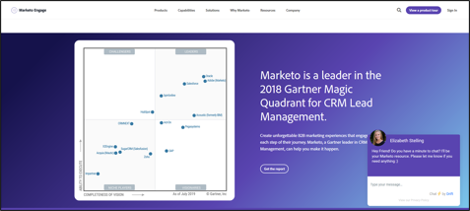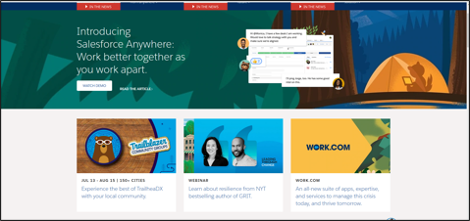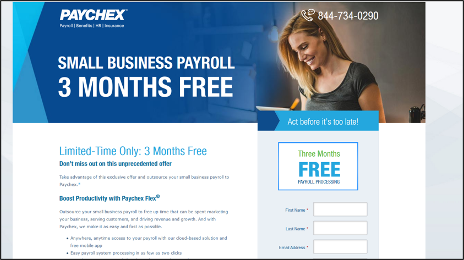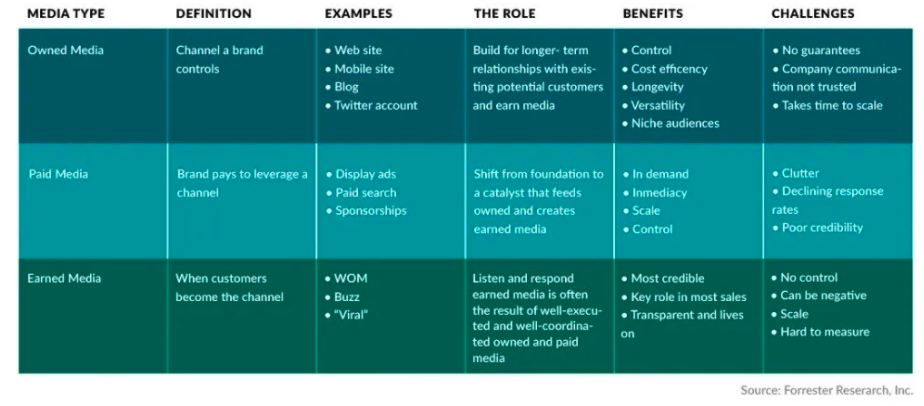
Last week, DemandGen CEO David Lewis shared the D3 Methodology, a holistic model that accounts for all the elements that can make or break an organization’s demand generation efforts. Today, I’m going to focus on the first phase of the D3 Methodology: Demand Creation.
The goal of Demand Creation is to create a space — and, obviously, demand — in the market for your products or services. Earlier this year, I shared the 3 Ds of successful Demand Creation: define your buyer personas, develop the right content, and distribute it so your target audience can find it. But, what about actually converting those leads into actual customers?
Despite spending a considerable amount of their marketing budget on advertising dollars, many of our clients (and marketers in general) still fall short of reaching their revenue goals because they haven’t optimized their conversion paths.
Yes, the humble conversion path plays a critical role in your lead acquisition framework. If you can’t get your prospects to take that next step, all your efforts were ultimately for nothing. And that’s not how we marketers like to roll.
A successful conversion path represents the journey your prospects take from being unknown to your business to becoming a customer. It typically includes an offer, which can either be content or promotional, Call to Action (CTA), landing page, thank you page, and thank you email. That’s why it’s so important to optimize all your conversion paths and remove any potential roadblocks that may derail a prospect’s journey to becoming your customer.
So, want to make sure yours keeps prospects moving in the right direction? Optimize the following four key elements and you’ll be well on your way:
- Goals and KPIs
My clients have found the most success when they start with their business goals and establish KPIs before assigning advertising budget and building campaigns.
For example, if your goal is to convert 10,000 prospects into leads:
- Figure out how many prospects need to come to your website in order to convert 10,000 of them. Some common questions to ask:
- Do your landing pages typically convert at 2% or 30%?
- What’s your average bounce rate?
- What’s the difference in conversion rates based on the number of form fields you ask prospects to fill in?
- Then, think through how you are going to measure success (e.g., increase percentage of leads and/or lead conversion rate).
- Offer
Begin by listing all of the pain points of your buyer persona, then develop a buyer’s journey, and, finally, create offers relevant to each step of that buyer’s journey and map each accordingly.
Most marketers make the mistake of creating too much top-of-funnel or bottom-of-funnel offers. It helps to think about where your prospects are in the buyer’s journey:
- A top-of-funnel offer typically focuses on creating awareness by discussing your prospects’ biggest pain points — not your products (e.g., eBook, video, infographic).
- A mid-funnel offer typically addresses that same pain point from your point of view as a thought leader (e.g., webinar, case study).
- A bottom-of-funnel offer typically helps your lead make a final buying decision by seeing your solution in real time (e.g., demo, free trial).
DemandGen’s Demand Factory eBook is an example of a top-of-funnel offer we created for a specific buyer persona at the beginning of their journey. We created a landing page on our website that only talks about the offer for that eBook.
eBook is an example of a top-of-funnel offer we created for a specific buyer persona at the beginning of their journey. We created a landing page on our website that only talks about the offer for that eBook.
- Call to Action (CTA)
Your Call to Action (CTA) is how you promote your offers, which can include your website (or websites), social media, blog, email campaigns, ads, and more. The whole point is to drive someone toward an action. Everything you digitally produce should have an associated action you would like your prospect to take. That action is your CTA.
Use the buyer’s journey to map the most relevant places to add CTAs for your relevant offers, like this example from one of our platform partners, Marketo, throughout your website:

This Call to Action on Marketo.com invites prospects to learn more
about Marketo’s expertise from a trusted industry thought leader.

This Call to Action on Salesforce.com invites prospects at the middle
of the funnel to learn more about one of their service offerings.
Your goal should be to place the relevant offers, along with their targeted Calls to Action, where your visitors are most likely to land throughout the buyer’s journey — whether they’re just beginning to do some initial research or they’re in the final decision-making process.
In other words, right content, right place, right time. If you’re just starting to think about purchasing a new car, for example, a hard sell for you to buy a brand-new luxury sedan within the next two weeks likely won’t spur you to action. First, you need to educate yourself so you can identify your requirements, compare different makes and models, and determine which car best meets your unique needs.
- Landing Page
Create a clean landing page that’s just about the offer. Seriously. Focus on converting your prospects with the one piece of content they’ve come looking for. That means eliminating any noise that may distract your prospect from downloading your offer.
If someone navigates to your landing page from an email campaign, only show them what they came there for — whether that’s an eBook, infographic, or something else — the benefit of your offer, and your form they need to complete to get your offer.

Paychex created this standalone landing page,
which only talks about the offer, for a paid search ad.
Don’t use your standard web page template, which includes your menu navigation and other elements that can distract your prospects. If they see something that catches their interest and don’t fill out the form to download your offer, you may have lost them forever.
- Thank You Page
The thank you page follows the same principle as a landing page. That’s because it’s also, technically, a landing page. Thank your prospect for requesting your content and let them know they can now download your offer.
Give it to them immediately, while you have their undivided attention. That’s literally the reason they just completed your form. If you send it to them via email, they may not see it while it’s still top of mind and you’ll have missed your opportunity. As the saying goes, strike while the iron is hot.
Now that they have the content they asked for, you can include your site’s menu navigation and offer the next piece of content in the buyer’s journey. If they’re ready for more information and have the time, make it as easy as possible for them to continue their research.
- Thank You Email
The thank you email is both your backup plan and the next step in your conversion path. Because let’s face it. People have short attention spans. We multitask. Things happen. Your prospect may begin to download your offer, but forget about it when the phone rings.
Thank them for downloading your offer, and let them know you’re also sending it to them via email so they can access it anytime. The thank you email also provides a good place for you to provide a second offer, which should be the next logical step in their buyer’s journey.
- Promotion
Developing a strategy for promoting offers is the next step. This is where you publish and promote your offers. Media selection should be a combination of owned and earned and paid, and you should distribute your content offers across a variety of channels:

This chart provides examples of owned, paid, and earned media,
along with common benefits and challenges. (Source: Small Business Trends)
When determining which channels to focus your attention on, consider where your prospects are most likely to convert and at which stage of their buyer’s journey. Say you developed an eBook for a specific buyer persona. On LinkedIn, 5,000 people fit your buyer persona, but only 2 percent of them converted into leads in a previous campaign. On Twitter, you have a reach of 250,000 people. While you can get more precise targeting on LinkedIn, your odds of converting more prospects into leads are higher on Twitter. Should you spend all of your money on LinkedIn, or should you spend more money on Twitter?
Test your success
Once you’ve optimized the key elements of your conversion path, it’s time to put it to the test — and then optimize some more, if necessary.
Just remember that testing is usually highly dependent on sales cycles. If your typical sales cycle is one month, it may make sense to test after a month. If it’s generally six months, you really won’t have accurate data until the end of six months. You can check the data in the meantime; just know that it’s not truly representative until the end of your average sales cycle.
Examples of test metrics:
- How many people visited our landing page for a specific offer?
- How many visitors actually converted on our landing page (i.e. how many form submits)?
- How many of those people eventually became buying customers?
Follow the Yellow Brick Road
When Dorothy and the Scarecrow, Tin Man, and Cowardly Lion followed the Yellow Brick Road, they didn’t need a map. The path was clear. They couldn’t miss it. That’s what your conversion path should feel like to your prospects (minus the flying monkeys).
If you want your lead acquisition efforts to reach their full potential, you must take the time to optimize and test your conversion paths. The next step should be obvious as your prospect learns more about the challenge they’re trying to overcome and how you can help them solve it. If it isn’t, your prospect will inadvertently wander off the beaten path until they find your competitor’s more clearly marked trail.
If you’re interested in learning more about how to optimize your Demand Creation efforts, I recommend listening to the following episodes of DemandGen Radio hosted by David Lewis and Carlos Hidalgo, DemandGen’s Chief Strategy Officer:
Ep. #152: Demand Creation Done Right
Ep. #163: The D3 Methodology: A Holistic Model for Maximizing Revenue
Ep. #173: The D3 Methodology: Essential Elements of Demand Creation
I’d also recommend downloading the D3 Methodology Overview deck to get a better sense of how everything fits together to optimize your demand generation initiatives.
And, if you’re ready to learn more about how DemandGen can help you optimize your lead acquisition efforts in particular, or Demand Creation in general, drop us a line!

Patti Heath is a Consultant dedicated to partnering with clients to achieve their business goals. She focuses on developing demand generation strategy, including lead generation, lead scoring, lead nurturing, and lead management. She enjoys staying on top of the ever-changing digital industry and identifying the best new technological advances.
The post Conversion Paths: The Yellow Brick Road of Converting Unknown Prospects to Leads appeared first on DemandGen.




















